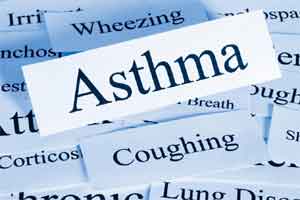- Home
- Editorial
- News
- Practice Guidelines
- Anesthesiology Guidelines
- Cancer Guidelines
- Cardiac Sciences Guidelines
- Critical Care Guidelines
- Dentistry Guidelines
- Dermatology Guidelines
- Diabetes and Endo Guidelines
- Diagnostics Guidelines
- ENT Guidelines
- Featured Practice Guidelines
- Gastroenterology Guidelines
- Geriatrics Guidelines
- Medicine Guidelines
- Nephrology Guidelines
- Neurosciences Guidelines
- Obs and Gynae Guidelines
- Ophthalmology Guidelines
- Orthopaedics Guidelines
- Paediatrics Guidelines
- Psychiatry Guidelines
- Pulmonology Guidelines
- Radiology Guidelines
- Surgery Guidelines
- Urology Guidelines
Coarse particulate matter may increase asthma risk

Children exposed to the coarse particulate matter may be more likely to develop asthma and to be treated in an ER or be hospitalized for the condition, according to new research published online in the American Thoracic Society's American Journal of Respiratory and Critical Care Medicine.
In "Long-term Coarse PM Exposure Is Associated with Asthma Among Children in Medicaid", researchers report that coarse particulate matter, the kind of air pollution created by physical processes such as tire and break wear, agricultural tilling, salt spray and dust created in manufacturing, appears to put children at greater risk for asthma, independent of exposure to fine particulate pollution.
Coarse particulate matter (PM10-2.5) measures from 2.5 to 10 micrometers; fine particulate pollution (PM2.5) measure 2.5 micrometers or smaller. By comparison, a human hair is between 50-70 micrometers thick.
The authors noted that there is substantial evidence that PM2.5 impacts respiratory and cardiovascular health, and this is why the Environmental Protection Agency monitors and regulates fine particulate pollution.
"We did this study to understand whether, in addition to PM2.5, coarse particulate matter contributes to asthma development and morbidity," said Corinne A. Kent, MD, PhD, lead study author and associate professor of pediatric allergy and immunology at Johns Hopkins University School of Medicine. "The most recent assessment by the EPA concluded that there wasn't enough data to say one way or another whether PM10-2.5 causes negative health effects."
The researchers analyzed the records of 7,810,025 children (age 5 to 20) living across the country who were enrolled in Medicaid over a two-year period, 2009-2010. The researchers adjusted their findings for race and ethnicity, sex, age, poverty, education and how urban the neighborhood the children lived in was. The researchers also accounted for PM2.5.
The study found for each microgram/m3 increase in PM10-2.5:
- asthma diagnosis increased by 0.6 percent,
- ER visits for asthma increased by 1.7 percent, and
- hospitalizations for asthma increased by 2.3 percent.
These findings were even stronger for children 11 and younger. The authors speculate that the stronger association is a result of asthma typically developing at younger ages and that young children are more likely to spend time outdoors and be harmed by air pollution.
The authors said that study limitations include the fact that there are few locations that monitor PM10-2.5. Most monitors measure only PM2.5, which the current study found was even more likely to be associated with an asthma diagnosis, ER visits, and hospitalizations. The researchers used statistical methods to predict concentrations of PM10-2.5 across the U.S. This allowed them to study such a large number of children, including those who do not live near a monitor.
"The first-ever analysis of the long-term effects of coarse particulate matter on asthma," the authors wrote, "provides evidence supporting the harmful effects of coarse particulate matter on respiratory health."
Dr. Keet noted that the EPA is currently conducting a comprehensive review of the science related to the health effects of particulate matter as mandated by the Clean Air Act. "Reductions in PM2.5 have led to improvements in childhood respiratory health, but there is still a great burden of asthma in children," she said. "Our findings, along with others, suggest that PM10-2.5 likely contributes to asthma, too, and that regulation and monitoring of coarse particulate matter should be considered."

Disclaimer: This site is primarily intended for healthcare professionals. Any content/information on this website does not replace the advice of medical and/or health professionals and should not be construed as medical/diagnostic advice/endorsement or prescription. Use of this site is subject to our terms of use, privacy policy, advertisement policy. © 2020 Minerva Medical Treatment Pvt Ltd